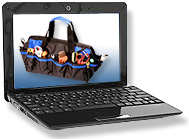T-DAR Maintenance Recommendations
To ensure the maximum life span and effectiveness of the T-DAR system, a maintenance procedure should be established. The solid state T-DAR system so does not require the more extensive maintenance that a mechanical system requires. Performing the following checks at the prescribed times will enable the system to continue providing secure access control. A system that is properly calibrated and maintained will give few false alarms.
Frequency |
T-DAR Maintenance Elements |
| During system installation | Control Unit CabinetThe T-DAR control box is an industrial computer with very sensitive micro-chips and electrical components.
Cutting or drilling of the metal enclosure inevitably results in metal chips and particles falling into the control box and lodging in the sensitive electrical components of the internal circuit boards. Additionally, the level of vibration caused by drilling/cutting of the enclosure is not included into our factory test procedure. Normal transportation and standard installation is well within our design specification. |
| At installation and following any subsequence additions or alterations to the area around the control box. | VentilationOther than a ventilation fan, a T-DAR system has no moving parts. Fan units last for a number of years under continual use, provided that the environment is clean and that there are no obstructions to the airflow.
|
| Every six (6) months | CalibrationTo ensure optimal tailgate detection, compare the calibration appearing on the Installer Camera Setting user interface screen against the settings listed in the manual - Section 7: Configuration and Set Up...
Calibrate the T-DAR system after a change in the following:
Test cycle the mantrap several times to ensure that there are no false alarms:
|
| Every six (6) months | Fans and TemperatureOn the front panel of the T-DAR controller are three LED lights used to indicate the internal temperature:
Ensure the fans are spinning at a constant speed. Both exterior fans should be running smoothly with no unusual vibration or noise. If there is a padded filter over the intake fan, replace the filter every six months.
When using padded filters in a dirty environment, replace the filters as often as necessary. The filters should be replaced if they show any amount of discoloration or darkening and well before the unit shows signs of overheating with the yellow or red LEDs. |
| Every twelve (12) months |
Stereo CamerasThere are two cameras in each stereo head. In order for T-DAR stereo algorithms to work correctly, the raw video from the cameras must be clean and stable:
|
| Every twelve (12) months | Hardware and IntegrationCheck the operation of the mantrap once a year to ensure that all systems are functional:
|

